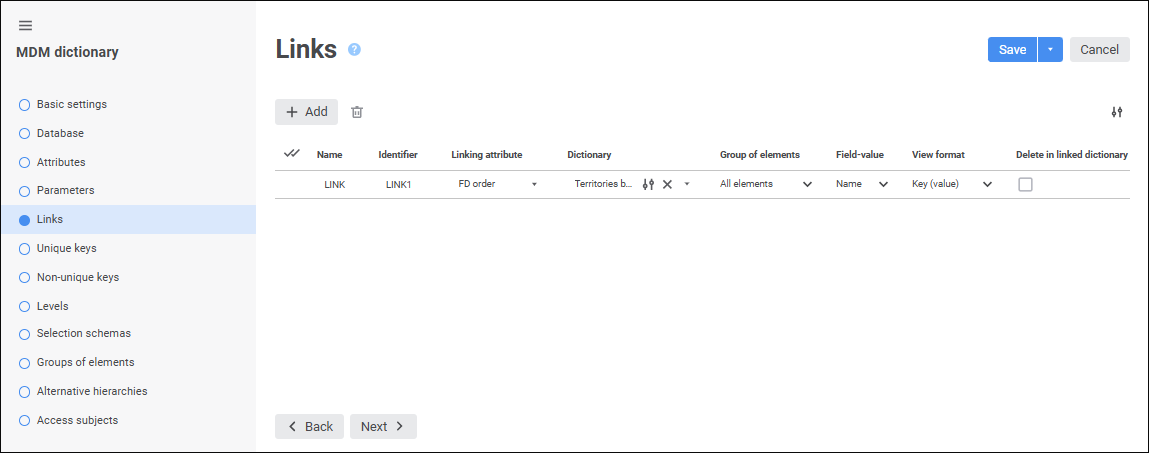
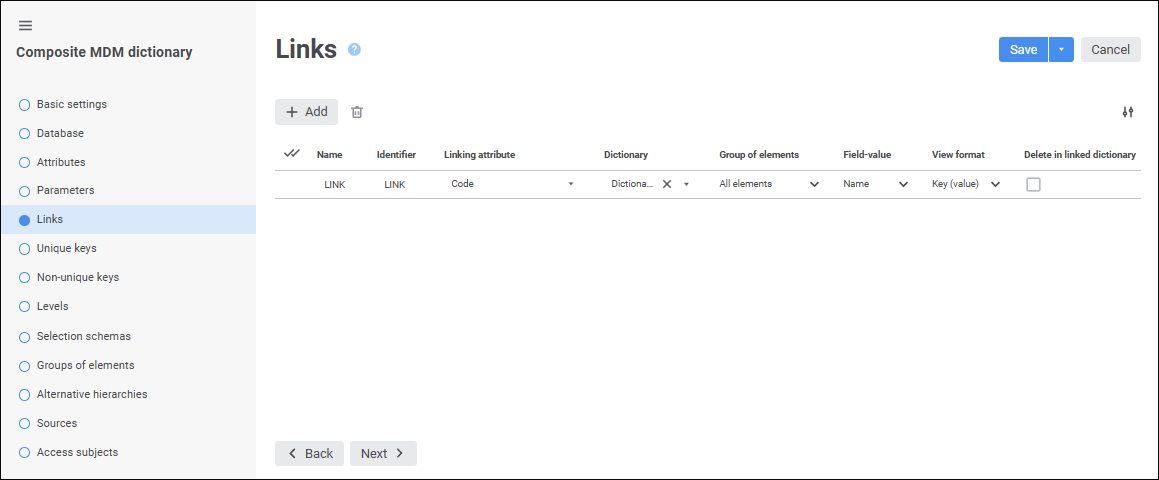
To set up a link between attributes:
In the web application set link properties in corresponding columns on the Links page in the MDM dictionary/composite MDM dictionary wizard.


In the desktop application use the Link Properties dialog box:
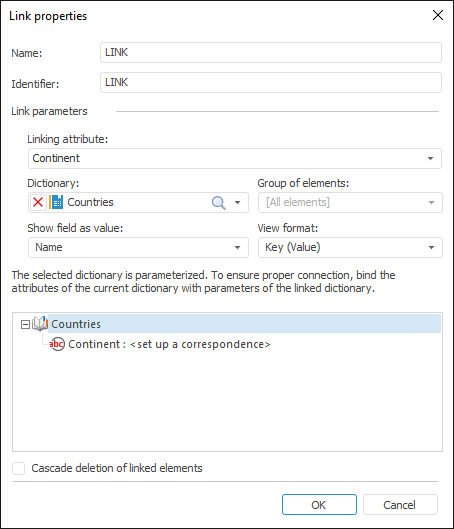
Determine link parameters:
 Field-value/Show field as value
Field-value/Show field as value
 Delete in linked dictionary/Cascade deletion of linked elements
Delete in linked dictionary/Cascade deletion of linked elements
To save link properties, click the Save/OK button.
To create a binding:
In the web application click the  Binding Parameters button in the Dictionary column next to the added link.
Binding Parameters button in the Dictionary column next to the added link.
NOTE. Creating a binding is available only for MDM dictionaries.
In the desktop application double-click the selected parameter in the parameter tree in the Link Properties dialog box.
The Binding Parameters dialog box opens:
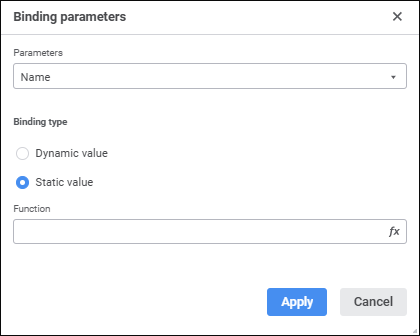
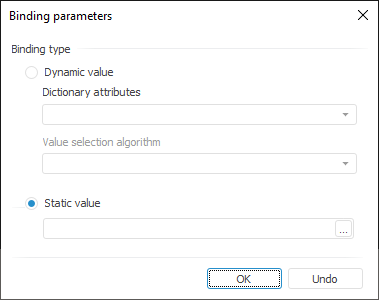
In the web application in the Parameters drop-down list select the parameter, by which a link is set between attributes of the current MDM dictionary and parameters of the dictionary to be linked.
Determine a binding type by selecting the corresponding radio button:
Dynamic Value. This type binds a parameter to an attribute of an edited dictionary. This type enables the user to change the value of the linked dictionary parameter when the attribute value is changed:
Dictionary Attributes. Select the dictionary attribute, which values will be sent as a parameter value. The drop-down list contains all attributes of the current dictionary.
Value Selection Algorithm. In the drop-down list select value selection algorithm in case of attribute multiple selection:
All. Array of all attribute values is sent to the parameter.
First. The first attribute value is sent to the parameter.
Last. The last attribute value is sent to the parameter.
NOTE. The Value Selection Algorithm drop-down list is available if the linked attribute can have multiple values.
Static Value. This type enables the user to set a static value. The following situations are possible:
If in the linked dictionary the parameter is linked to another dictionary, the field displays the list of elements of this dictionary.
If the parameter is not linked to another dictionary, a value corresponding to the parameter type can be set. To set value, click the  /
/![]() Set Formula button. The expression editor opens.
Set Formula button. The expression editor opens.
To save settings of binding parameters, click the Apply/OK button.
Formulas can be set up using the expression editor:
The expression editor in the desktop application is uniform for all platform tools and objects. The uniform expression editor is described in the Creating Formulas and Expressions document.
The expression editor in the web application differs depending on the configured tool or object.
The expression editor dialog box for setting static value of binding in the web application:
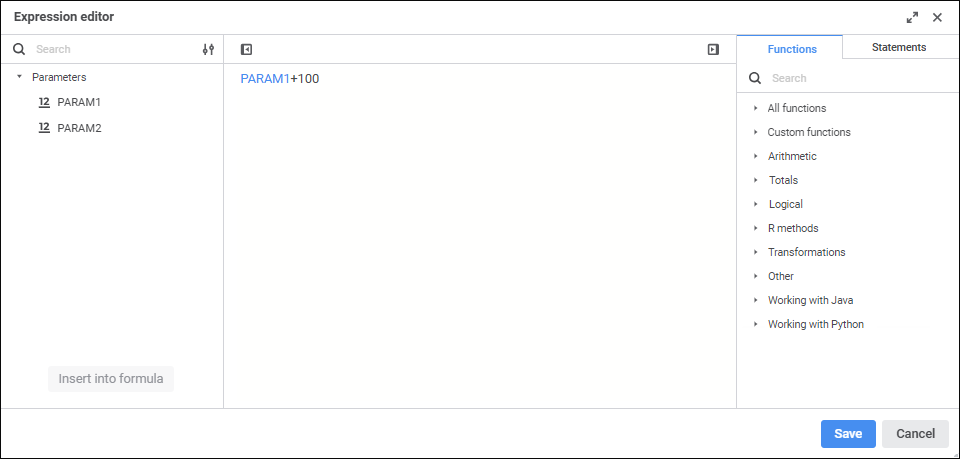
Create a formula, by which binding will be calculated.
Operands, arithmetic operations, functions, numbers, comparison characters and round brackets can be used in a formula. There are some features of use:
All element types, except for numbers, can be inserted both using the keyboard or special panels.
Numbers are inserted only using the keyboard.
 Insert functions and statements
Insert functions and statements
See also: